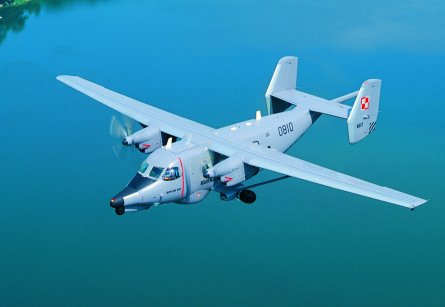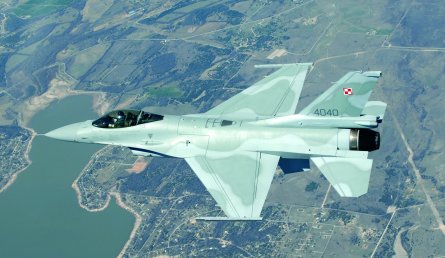Murdo Morrison / Rzeszow
In the late 1930s, the then-south central Polish city of Rzeszow was chosen as the cradle of the country’s infant aviation industry because aircraft could be quickly scrambled east or west if Hitler or Stalin attacked. Although Rzeszow ended up near the south-eastern border of a reshaped post-war Poland, it remains the heart of the country’s resurgent aerospace sector.
The region around Rzeszow, today christened Aviation Valley, has lured a flurry of Western investors in the past few years, including Avio, Goodrich, Safran and United Technologies (UTC). All have been attracted, says Marek Darecki, who chairs the Aviation Valley association of manufacturers, by the area’s “high-tech, low-cost” offering. Poland’s European Union membership, strong work ethic and high proportion of English speakers are also major advantages. “This is the place that is ready for investors who need to reduce their costs,” he says.
Although employment has fallen drastically since the inefficient era of the early 1990s, it is climbing again and companies are scrabbling to find skilled workers. The Aviation Valley area has around 40 companies, employing a total of 11,000 people and with revenues of €300 million ($370 million). The vast majority are members of the Aviation Valley association, founded three years ago to promote local industry and establish links with educational and research establishments, and with overseas investors. The area is responsible for 80-90% of Poland’s aerospace output.
Past links
Rzeszow is a city with grim tower blocks and revolutionary sculptures, and newer imports: car dealerships and burger bars. During the Cold War the city’s main aerospace employer, WSK PZL Rzeszow, churned out engine parts for Russian fighters. From its main entrance, the factory may still resemble the sprawling state-run entity it was until UTC bought it in 2002. But, once inside, the contrast with the past is clear.
WSK is one of the most up-to-date plants in UTC’s global aerospace network, with the US firm having invested $120 million in buildings and machinery. As well as replacing the post-war workshops with modern, well-lit buildings, the company has purged old equipment. “We’ve added 250 CNC machines and thrown 1,270 pieces out,” says Marek Darecki, who, in addition to chairing the Aviation Valley association, is WSK’s chief executive.
The link with UTC goes back to the 1970s, when its Pratt & Whitney Canada division began subcontracting sheet metal work to WSK, something that was very rare during the Cold War. The company now makes parts for the Pratt & Whitney F100 engine that will power Poland’s 48 Lockheed Martin F-16 fighters, part of an extensive offset deal. It is also responsible for about a third of the Pratt & Whitney Canada PW600 engine used by three of the new breed of very light jets (VLJ): the Cessna Mustang, Eclipse 500 and Embraer Phenom 100.
The workforce has shrunk from 10,000, when under the state 10 years ago, to 4,000 today, but the company remains the largest aerospace employer in central Europe with sales of $176 million. And, although 1,300 people have been made redundant from the company since the UTC takeover, another 1,300 have joined, bringing in new skills. “When we changed from the old machines to CNC machines, a lot of the older people left – with good severance packages,” he says. Language skills have also been revolutionised. “We had 26 English-speakers in 2002; now we have 500.”
Building business
P&WC has been accounting for a larger share of its business – it will be 55% this year – mainly thanks to the VLJ phenomenon. Eclipse Aviation’s target of assembling up to four Eclipse 500s a day at its factory in Albuquerque from this summer means WSK is among dozens of suppliers around the world having to step up into the world of just-in-time automotive-style production.
 |
By November, a section of WSK’s factory will be dedicated to making parts for up to 100 PW600s a month, working three shifts over seven days.
The company has established four “centres of excellence”, he says: sheet metal, gears and gearboxes, investment castings and tubes. It also produces compressor blades, machined turbine blades, cases, and rotating discs and seals. For other work, WSK’s policy has increasingly been to outsource. “In the old days, we didn’t have SMEs [small and medium-sized enterprises]. The idea of Russian-style industry was to be very much vertically integrated. We did everything under one roof down to making small nuts. It made sense in the old system, because you had control,” he says. “But in today’s environment, you need people to take non-core activity away from you.”
One of the solutions for WSK, and other Aviation Valley companies, has to been to help create an SME network around the factories. While the former communist countries with large aerospace sectors have concentrated on finding overseas buyers for their state-owned conglomerates, they have had less success in fostering a risk-taking business climate that allows independents to set up on their own. This is down to the lack of encouragement and understanding from banks, government and local authorities as much as any shortage of would-be entrepreneurs, says Darecki.
Aviation Valley has been successful in giving a head-start to new SMEs, he says. One such is Ultratech, founded in 2000 by Marek Bujny, a WSK manager for 16 years. The company, which makes machined parts, received its first order from Goodrich – whose Polish operation was then headed by Darecki. It is still the sole supplier of side struts for the Boeing 737 main landing gear. “He was looking to outsource to local suppliers, at the time a new idea in Poland,” says Bujny, who is also a vice-president of the Aviation Valley board, responsible for SMEs. “We understood each other.”
Since then, Ultratech has taken on work from WSK – again from Darecki. Goodrich and WSK account for more than 95% of its $900,000 turnover – which has been growing by 30% a year. The company is beginning to struggle to meet orders and is keen to expand. However, although “we’re working like dogs”, says Bujny, he and his fellow director are first keen to “sweat the assets” of their leased milling machines. Ultratech, which has 30 employees, is based in a small, rented industrial unit near WSK’s factory, but plans to relocate within two years to a new facility at Rzeszow airport, where a technology park is being planned with €10 million European Union subsidy.
The park will help Aviation Valley attract more local and overseas investors, believes Darecki. The small airport – which has a daily Ryanair connection to London and regular flights to Warsaw on LOT – is also being expanded and is one of two eastern European sites being considered by Ryanair and Singapore Technologies for a new maintenance facility.
|
| WSK will make parts for the P&W F100 engine that will power Poland's F-16. |
Cross-border culture
While establishing a local network of SMEs is one way to encourage outsourcing, another is to push lower-value-added production to lower-cost economies. Rzeszow is less than 100km (62 miles) from both the Slovakian and Ukrainian borders, and the former Soviet state offers tremendous opportunities, says Darecki. “We are trying to create a cross-border culture with Ukraine, where labour rates are a fifth of those in Poland, to establish a low-cost supply chain. It’s like working together again like we did in the Warsaw Pact [a trading and defence agreement between the Soviet Union and its European satellites],” he says. The Aviation Valley association hosted a conference in April to encourage links between Polish and Ukrainian industry. The country, he says, has a record of technological innovation and a skilled workforce, and, although its communist-era industry has not been restructured, the government is keen to foster links with the West and away from reliance on Russia’s aerospace industry.
Thirty minutes’ drive from Rzeszow, in Sedziszow, another foreign-owned manufacturer is expanding fast. Hispano-Suiza Polska was set up as Snecma Polska in 2002 when the French engine maker was looking to establish an industrial footprint in Poland as part of the campaign by Dassault Aviation and the French government to sell Mirage fighters to the Polish air force. Although Poland opted for Lockheed Martin F-16s instead, the plant – in a former furniture factory refurbished with €4 million of investment – has remained and has become part of the supply chain for Hispano-Suiza, making gears for transmission systems on the CFM International CFM56, as well as the General Electric GE5000 and Rolls-Royce Trent families. It produced 8,000 units last year and plans to increase this to 10,000 in 2006.
President and general manager Ryszard Legiewicz has big ambitions for the business, now part of the giant Safran group. He points out the new area of shop floor, where he plans to site a third production line, for engine components, to add to the transmission components line set up last year. The company has gone from 115 staff at the end of 2005 to 150 today. Legiewicz plans to be employing 180 by the end of the year and “that will double by the end of the decade if our new projects go right”, he says. By that stage turnover, which was €3 million last year, will have risen to €27 million, he predicts.
 |
| The M28 Skytruck/Bryza-Bis utility aircraft is built by PZL Mielec, based in Aviation Valley |
Major employers
As well as WSK, Aviation Valley is also home to general aviation manufacturer PZL Mielec and helicopter company PZL Swidnik, based in the towns of those names, north of Rzeszow. Both are state-owned and, although the workforces have shrunk, they are still substantial employers. PZL Swidnik, which manufactures the Sokol 14-seat utility helicopter and the Kania light twin-turbine, has about 3,500 staff; PZL Mielec, whose flagship product is the Antonov 28-derived M28 Skytruck/Bryza-Bis utility aircraft, about 1,400. Both companies carry out assembly and structures work for other manufacturers, including Airbus, AgustaWestland, BAE Systems, Lockheed Martin, Pratt & Whitney and Sikorsky.
One of the biggest challenges for all the Aviation Valley companies is ensuring a steady supply of engineers, designers and technicians able to use CNC machines. “Industry here needs 1,000 highly-skilled machine operators,” says Darecki. Local companies are helping to fund a new college to train 300 operators a year, set up with an €5 million European Union grant. One of the biggest problems is that newly qualified technicians are tempted away by higher wages in other EU countries. “The newspapers are full of advertisements for CNC operators,” says Andrzej Rybka, executive director of the Aviation Valley association. “It’s a brain drain, but it’s a global village, there is nothing we can do.”
Darecki, however, believes Poland can push itself further up the aerospace value chain. “Manufacturing is good today in Poland, but it might be better in China tomorrow. That is why the best way is to support world-class manufacturing with science and design activity,” he says. “We want to be like Spain in 10 to 15 years.”
Source: Flight International



























